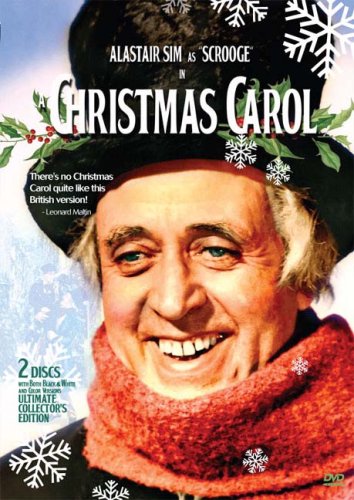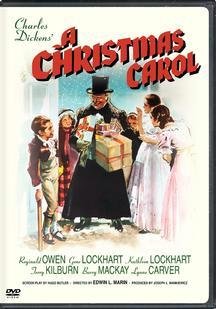
“ Love is a magic comfort food for the weak and uneducated.”—Connor Mead
Charles Dickens is surely rolling over in his grave over this non-romantic rip-off “comedy” of his hallowed holiday classic.
Ghosts of Girlfriends Past, a modern-day by-the-numbers serious-comedic spin on Dickens’ A Christmas Carol, is such a smarmy, unfunny and hypocritical riff, that DVD-viewers will pound their own stake of holly through its heart by giving it amiss come the next round of rental picks. Maybe it’s a telling point that this “Holiday Movie” wasn’t even released at Christmas, but made an untimely arrival last summer. In any event, yours truly chose the Chick Flick assignment to stretch my range of cinematic scrivening, but five minutes into it, was already regretting that I hadn’t turned to the, say, infinitely more healthy romantic banter of Ed Lee’s Header.
Directed by Mark Waters (he of the fairly decent Mean Girls and Freaky Friday), and scripted by Jon Lucas and Scott Moore (The Hangover, Full of It), the movie, like its repulsive, womanizing photographer protagonist Connor Mead (Matthew McConaughey), flashes a fair set of visual choppers, a decent cast, and well-scrubbed production values. But in the end, the flat, banal jokes, phony plot, and general mean-spiritedness wreck any chance of creating audience sympathy or selling its seasonal “All You Need Is Love” bromide. Ghosts of Girlfriends Past is a right nasty hum-bug, buoyed only occasionally by some decent turns in the minor parts.
Anyone familiar with Dickens’ novelette, and all its cinematic incarnations, will have no problem guessing how this version is going to play. Replacing miserly, X-Mas-loathing Ebenezer Scrooge with a heartless fashion photographer who earns $150K-a-year, the film presents its “hero” as a vile, womanizing jerk, who is so commitment-shy that he can’t even bring himself to consider “spooning” with any babe he dates and so contemptible in the cold exercise of his “love ‘em and leave ‘em philosophy” that he breaks up via conference call with his three latest victims – which is a fair indication of how superficial and smug the rest of the film is going to be. There is no doubt that a rude wakening lies ahead for Connor, and its easy to guess how the Dickens formula will sign-post each plot point before the inevitable happy conclusion.
McConaughey, who is one of the mainstays of the modern romantic comedy (How to Lose A Guy in 10 Days, and Failure to Launch to name just a few of his recent vehicles), is as tanned and toothy as a TV televangelist, and the actor essays Connor with reptilian, narcissistic style. The problem with McConaughey in the role is that the actor’s good-natured presence is totally at odds with the despicable character he is playing, and because of this, you can’t take him seriously as Lady Killer or Reformed Cad. He wavers between the two extremes, and never registers as anything approaching a real human being; Mead is so vile and off-putting that there is no way that one could believe for one tiny second that so many beautiful women would buy into his shtick. Credibility is strained from the onset with this hateful playa’ cypher, and it only gets worse. In fact, it’s hard to really envision this movie as a sought-for “Chick Flick” rental because it is so outrageously insulting to the distaff set. Renting Fellini’s City of Women would probably be a better use of time.
When Connor heads to New England for his brother Paul (Brecken Meyer)’s wedding to long-time girlfriend Sandra (Lacey Chabert), he wastes no time making the rehearsal as rancorous as possible by bashing on the institution of marriage and deriding love as “magical comfort food for the weak and uneducated.” Given Connor’s general attitude and predatory ways, you have to wonder why they invited him in the first place, let alone entrusting him with the wedding toast. Of course, you have to wonder why his nebbish brother is marrying Chabert’s Sandra – a shrill harridan who screams and bellows every line of trite dialogue. To complicate matters, Connor’s childhood love, and former conquest, Dr. Jenny Perotti (played with the usual awkward, coltish charm by Jennifer Garner), is the maid of honor. It should be no great revelation that Garner’s hottie doctor character believes that Connor The Conqueror, deep-down, is really a “sweetheart”: this character is another of the movie’s blatant and implausible elements: how could Dr. Jenny still believe in such an unrepentant, sleazy dog. The answer to that question is simple: because the dictates of the plot demand that she does.
Hashing through his ambivalent feelings toward Jenny (as shallow as Connor is, you can’t really say he’s wrestling with his conscience), and relishing the chance to bed the one bridesmaid (Amada Walsh) he hasn’t managed to seduce, Connor receives an unexpected jolt when he is confronted by the ghost of his legendarily libidinous Uncle Wayne (Michael Douglas, having fun with the Marley role). He informs Connor that he will be visited that night by the Ghosts of Girlfriends Past, Present and Future who will show him the folly of his self-centered ways, and that if he does not change his life, he will wind up as alone as Wayne was when he died. The aforementioned statement is actually rather misleading: strictly speaking only one of the “Ghosts” of Girlfriends Past is actually a “girlfriend” (she lasted 32 seconds!).
This is where the cinefantastique elements kick in, such as they are. When Connor repairs to his bedroom expecting a tryst with said bridesmaid, he encounters his first spirit guide, the Ghost of Girlfriends Past: brace-wearing, frizzy-haired teen Allison Vandermeersh (Emma Stone), Conor’s first sexual partner. Allison takes Connor back to the ‘80s and shows him how, after being rebuffed by Jenny at his senior prom, Connor apprenticed himself to his womanizing cad of an Uncle Wayne (“the power of a relationship lies in who cares the least”, Uncle Wayne advises). This is probably one of the movie’s finer segments because at least Stone’s Allison and Douglas’ Wayne are a shade fun and lively. The rules of Haunting are a little muddled as Douglas and Stone can go from physically substantial to phantom insolubility at any given time. Yet, Wayne is downright creepy in his committed misogyny: when he takes Connor to a bar to give him his first lessons in defeating the opposite sex, you have to wonder why Child Services isn’t tearing Connor away from such an irresponsible and dangerous guardian.
The next “spirits” on the horizon are a bit of a cheat: the Ghost of Girlfriends Present is neither a Ghost nor one of Connor’s conquests but Melanie (Noureen DeWulf) – Connor’s long-suffering assistant and the only healthy relationship Connor has with a woman (you almost hope that they’ll wind up together). Melanie takes the time to show Connor the emotional wreckage of his harem lifestyle by showing him the weepy aftermath of his three-way break-up. It’s indicative, however, of the sloppy writing that Melanie’s “ghostly” persona shows up at the Happy Ending as the same time that the Real Melanie makes an appearance. Still, these scenes do have at least one effective and poignant moment of fantasy when a torrential downpour falls on Connor – composed of “all the tears of the women who have cried over him.” Unfortunately, even this scene ends in a vulgar payoff.
That takes us then to the “Ghost” of Girlfriends Future (again, not a Girlfriend), personified by an anonymous, ethereal beauty (Olga Maliouk) who shows Connor how his life will go if he continues to reject these last opportunities for love. She also reveals the equally tragic consequences for his brother Paul (this character kind of serves as the “Tiny Tim” figure by default), who after he has spent most of the movie defending his lecherous bro (Connor pretty much raised him), is headed for his own downward spiral after Sandra has discovered that he had had a years’ past indiscretion with one of the bridesmaids (the news leaked by Connor of course). So, with Jenny slipping away and Paul and Sandra’s nuptials in tatters, will Connor sink fully into the slime or will he seize redemption, reunite with Jenny, and save his brother’s wedding?
The major problem is the strong whiff of toxic hypocrisy at the heart of this fluff that is totally at odds with the narrative’s feel-good message. As much as the Ghost of Girlfriends Past trashes the McConaughey character for his selfish, predatory ways, it also unabashedly celebrates his womanizing by parading as much femme eye-candy on-screen as possible, and relishing the fall of every vacuum-minded boy-toy. Aside from a couple discerning female characters (Melanie and Anne Archer, slumming here), the rest of the chicks in this Chick Flick are shallow, vicious ditzes who exist only to feather Connor’s bed. This is the kind of world where all bridesmaids and fashion models are brainless, masochistic sluts eager to throw themselves at any conscienceless seducer. You wind up shaking your head and wondering “Doesn’t this guy’s reputation precede him? Don’t the gals possess a whit of esteem or emotional self-preservation?” On the flip-side, with the exception of one male wedding guest Brad (Daniel Sunjada), who has been invited for Jenny’s benefit, the groom’s men are all homely, spastic dweebs. This really is the kind of film that will send the most committed feminists into a fury.
It’s hard to put a finger on what is more outrageous: the total cynicism, or the filmmakers’ hard-sell of the hateful main character’s change of heart. Piled on top of Jenny’s laughable assertion that Connor is really a decent guy, is the unconvincing bid to give Connor a “heart” by portraying him as an orphan who had to singled-handedly raise his brother. Even worse, though Michael Douglas’ Hugh Hefneresque Marley character (who calls everyone “Dutch”) has been sent back to earth to convince McConaughey to mend his hedonistic ways, he himself shows no signs of repenting his past indiscretions. He’s still a randy swinger’on The Other Side. This really indicative of the objectionable smirky wink-nudge nature of Ghost of Girlfriends Past and effectively deflates the moral dilemma here: How can you accept the hero’s transformation if the ghostly moral messenger still waxes nostlgic for his lothario days? Even after the Big Change, I was unconvinced that either Connor or Wayne truly repented their lifestyle choices.
That’s not to say that Ghost of Girlfriends Past is absolutely awful or without merit. The basic structure of the Dickens plot definitely has its appeal, and there are a clutch of decent supporting performances on hand. It’s good to see the usually fine Robert Forster in anything these days, and he gets a good chuckle as Sandra’s dad, a USMC sergeant-turned-minister who offers a wholly inappropriate wedding toast to the bride and groom. Stone is energetic, annoying and sprightly, and is, at least, a character that’s wholly alive. Noureen DeWulf brings some much needed level-headedness to her role as Connor’s go-to girl (“There’s apple, bubble gum and Tandoori. I know it sounds gross, but have two of them and you won’t feel your face,” she openes as she comforts a trio of Connor’s victims). Anne Archer, in a brief appearance as the bride’s sexy mom, is sweet and savvy as one of the few women who see through Connor’s games, though getting a laugh out of the chase. Garner is good as Jenny, despite the character she’s playing, and Douglas gets a number of decent laughs as Wayne. Daryn Okada’s photography and Bruce’s Green’s editing is brisk.
The DVD offers no special features: it includes Wide-Screen and Full-Screen versions, and language choices of English, English for The Hearing Impaired, and Spanish.
GHOSTS OF GIRLFRIENDS PAST (May 1, 2009). Directed by Mark Walters. Written by Jon Lucas & Scott Moore. Cast: Matthew McConaughey, Jennifer Garner, Michael Douglas, Emma Stone, Breckin Meyer, Lacey Chabert, Robert Forster, Anne Archer, Daniel Sunjata, Noureen DeWulf.










